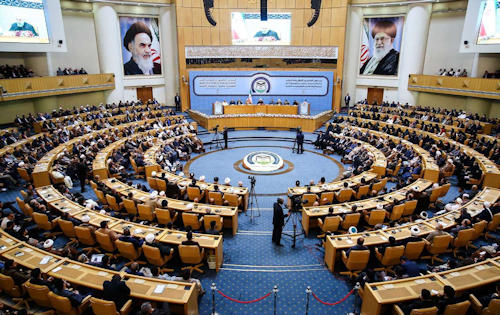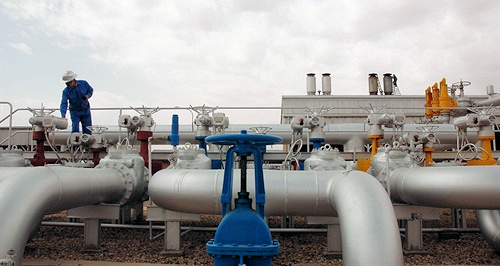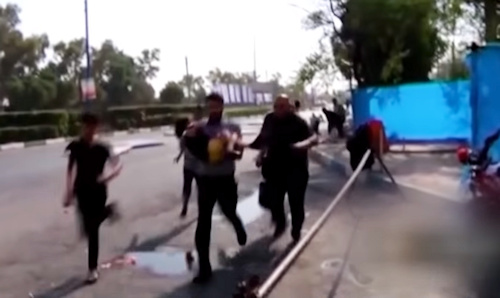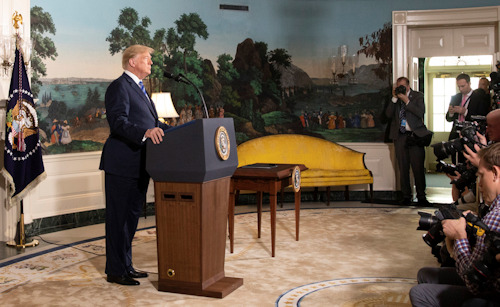Iran is a puzzle: attractive but difficult to understand. An Iranian does not think like a Westerner or an Arab: the essence of his story goes beyond the Shiite precepts, and for him Westerners are subjects who have lost the meaning of their own. In Iran there is not jahiliyya1 that keeps away the imperial sense of a state solidity that wants old and new Persia projected on the Gulf, nothing that can make us forget the distinction between Iranian and Muslim, with a pre-eminence of national identity over the religious one. Here we practice the taqiyya, the art of concealment to protect the faith, the interpretative key to approach the Persians. The Western worldview is a complex one, yet it is the only way to read Iranian foreign policy with less ideological and more realistic objectives, adapted to the regional hegemonic ambitions of a leadership that cultivates a strong imperial sensitivity.
The Iranian power projection looks towards Herat, to the east; towards Syria and Iraq to the west, where it intends to fill the political vacuum generated by the fall of Saddam Hussein and the congenital weakness of Al Asad; even more to the west, inaugurating a new historical phase, it points to the Lebanon of Hezbollah, the Gaza Strip of Hamas, the Yemenite areas controlled by the Huthi.
The Shiite religious element is the direct consequence of Iranian willfulness which, in order to pursue its objectives, has no qualms in supporting the Sunnis of Hamas and the Alawites heretics in Syria. This can only lead to strong enemies, such as Israel, Saudi Arabia, the UAE, Egypt, with the other imperial heir and historical rival, neo-Ottoman Turkey, hampered by Iranian aspirations but striving to support them in an anti-American function. Just i "Without history" can cause a change in the balance: by accepting / facilitating Iranian supremacy with risky withdrawals from the fronts more "Hottest" (Syria), effectively displacing Arabs and Israelis; exploiting economic weaknesses and social exasperation to propitiate a change regime, perhaps by the exiled opposition of the Mojahedin-e Khalq and the nostalgic monarchy.
Between God and reality
 Politics and internal society reflect the health state of the country. The clash between reformists and more radical elements has imposed on President Rouhani, today minor evil necessary, to get into a rhetoric aimed at demonstrating political unity of purpose and to prevent a clash between real society and the regime. It is widely believed that the solution to problems is in structural rather than in one regime change; it is however too early to see if reformists have the strength to impose themselves as a political force capable of winning public support. The growing external pressure could encourage the mass to support the current regime, even if not always able to provide adequate solutions to an evolving society, a mass that could exaggerate its dissent already at the next 2020 elections and the presidential elections. 2021, with the weight of young (and unemployed) graduates, and women, intolerant of strict Islamic precepts.
Politics and internal society reflect the health state of the country. The clash between reformists and more radical elements has imposed on President Rouhani, today minor evil necessary, to get into a rhetoric aimed at demonstrating political unity of purpose and to prevent a clash between real society and the regime. It is widely believed that the solution to problems is in structural rather than in one regime change; it is however too early to see if reformists have the strength to impose themselves as a political force capable of winning public support. The growing external pressure could encourage the mass to support the current regime, even if not always able to provide adequate solutions to an evolving society, a mass that could exaggerate its dissent already at the next 2020 elections and the presidential elections. 2021, with the weight of young (and unemployed) graduates, and women, intolerant of strict Islamic precepts.
In the 40 anniversary of the revolution, trust in the clergy is diminished; Ayatollah and Imam are perceived as well-off representatives (not elected) of the establishment and responsible for the social economic default that, with the next departure of Ali Khamenei from Supreme Leader, could undermine the system of velayat al faqi2. The protests that exploded between December 2017 and January 2018 caused by the worsening of the financial and salary situation, albeit with less intensity and lacking a national leadership, continued throughout the year; it will depend on the regime to prevent dissenters from becoming destabilizing, even if not yet able to undermine theocratic bases; the government will have to compact the middle class, a former social backbone now almost extinct and not part of the compensation system for the loss of employment; improve the national organization; still resort to his repressive apparatus.
Even before the new US sanctions came into force, between August and November, inflation rose to 18,4% with a growth trend; foreign investments have been hit with estimated unemployment at around 1 million units. The US sanctions, to which the Dutch ones have been added for the killing of two dissidents, have gone to exacerbate an already problematic economic framework that has not found useful shore in a politically weak Europe incapable of producing objective geopolitical analyzes. In conclusion, if for many Trump is guilty, clerics in power are no less, with President Rouhani as a useful (and expendable) scapegoat. A difficult task, even for those who administer in the name of God.
 Liquids of power
Liquids of power
According to the Shana Agency, despite US pressure, the number of potential oil buyers appears to have increased. What is certain is that the "exemptions" from compliance with sanctions provide for one dead line, and that even part of the exempted countries do not show the desire to incur possible retaliation actions. What is certain is that Iran, not intending to reduce its daily quota of barrels, is looking for alternative institutional and financial means; the EU has launched two hypotheses, which have remained so: the use of the SPV3, a barter system "Oil for goods", whereby crude oil imports would be paid not directly to Iran but to the SPV, with European exports shipped without direct money transfer to the sanctioned state, bypassing the US currency and using another as an intermediary; the use of its own institution of the blocking statute - never applied - which guarantees the nullification of sanctions and a compensation regime. Furthermore, the threatened blockade of the Strait of Hormuz should not be forgotten.
Even water is a problem; its scarcity, due to drought and lack of infrastructure, threatens agricultural self-sufficiency and tests long-term hydroelectric energy exports: that is, how to undermine two basic sectors to overcome sanctions. The companies of the Pasdaran they have long pressed to make an unsustainable number of (poorly constructed) dams, undernourished due to the lack of precipitation. The intervention of Rouhani was required, which aimed both at the construction of underground pipelines, less subject to evaporation, and complementary systems upstream and downstream, and at desalination stations along the Persian Gulf, which however require considerable energy expenditure.
 The problem is specious: energy-intensive solutions consume natural gas, which would oblige to reduce foreign exports (especially to Turkey, Iraq and Oman), and to resume imports from Turkmenistan; however, it is unthinkable not to be able to count on strategically necessary agricultural production. One of the first consequences occurred in Khuzestan, with popular protests in a region which is also socially and politically unstable. The September attack in Ahvaz (photo) is the tip of the iceberg, where the immersed part sees the presence of a strong Arab component that has long opposed the Persian government, and which is even polarized on two trends: a federalist and an independentist, already operating as a fifth column during the war against Iraq and who, united under theArab Struggle Movement for the Liberation of AhwazBaathist organization, endorsed the work of the armed wing, Martyr Mohye al-Din al-Nasir Brigade, responsible for the major attacks conducted over the past thirteen years against oil extraction facilities. Ironically: Khuzestan, is the area where about 80% of oil reserves are concentrated on shore Iranians, and on which the productive capacity of the country depends. Given the ethnicity, discontent and difficult economic conditions, it is conceivable to resort to jihadist support that would open a dangerous internal front. The third liquid, money, we do not mention it: it is always present.
The problem is specious: energy-intensive solutions consume natural gas, which would oblige to reduce foreign exports (especially to Turkey, Iraq and Oman), and to resume imports from Turkmenistan; however, it is unthinkable not to be able to count on strategically necessary agricultural production. One of the first consequences occurred in Khuzestan, with popular protests in a region which is also socially and politically unstable. The September attack in Ahvaz (photo) is the tip of the iceberg, where the immersed part sees the presence of a strong Arab component that has long opposed the Persian government, and which is even polarized on two trends: a federalist and an independentist, already operating as a fifth column during the war against Iraq and who, united under theArab Struggle Movement for the Liberation of AhwazBaathist organization, endorsed the work of the armed wing, Martyr Mohye al-Din al-Nasir Brigade, responsible for the major attacks conducted over the past thirteen years against oil extraction facilities. Ironically: Khuzestan, is the area where about 80% of oil reserves are concentrated on shore Iranians, and on which the productive capacity of the country depends. Given the ethnicity, discontent and difficult economic conditions, it is conceivable to resort to jihadist support that would open a dangerous internal front. The third liquid, money, we do not mention it: it is always present.
Unexpected beliefs, antagonists and allies
The region moves according to independent dynamics from the USA; if EAU and Bahrain, together with Egypt, have decided to reopen the embassies in Damascus, it is possible to believe that they have received the approval of the Saudis, intending to resume contacts with Al Asad. What is certain is that the Arab states, strong of the aid that Syria needs, could either try to remove Asad from the Iranian orbit by allowing it to re-extend its influence on Lebanon, and to strengthen the Russian presence, interested in the Divide and conquer to contain Teheran. In reality, the Arab capabilities to contrast Iran are limited, and given that the US intends to pursue the road of sanctions, geopolitically we can reach two conclusions: part of the Arab states have found a new enemy, Iran, and an unexpected ally, Israel (against which there was no Iranian armed response to the strikes taken to Syrian territory), even at the cost of sacrificing the Palestinian cause. The rivalry with the Israelis also extends to other theaters; the election of Bolsonaro in Brazil will most likely limit Iranian interests in South America, delegated to the Lebanese representative of Hezbollah, even if the huge bilateral trade volume, increased after the 2015 nuclear agreement, must be considered. Nothing idealistic, only the old dear Realpolitik.
 Strategic Crossroads
Strategic Crossroads
The US release from the JCPOA (Joint Comprehensive Plan of Action, ed) has posed various problems; the abandonment of the nuclear program would not bring any strategic advantage to Iran, which is projected both towards the strengthening of its medium-range missile capabilities, and the operational completion of its advanced know-how relating to the enrichment of uranium also thanks to Russian aid. However, it must be considered that the policy of power pursued, with the costs incurred for military activities in Syria, Lebanon and Gaza, has had its weight in the popular protests of the 2017. To this must be added the political difficulties encountered in containing the very strong relevance of the Pasdaranmilitary organization parallel to both the increasingly less important FFAA and the government institutions, which over time has been able to carve out a vast economic and financial space extremely conditioning, also in virtue of the support received by the Supreme Leader but not by the Government, strongly opposed and sees threatened by the possible advent of a military leader (Qassem Soleimani commander of the Forces Pasdaran Al Quds?).
The Iranian strategic concept, based on the operational and flexible decentralization of the Mosaic Defense from an asymmetric point of view beyond the borders of the state, imposes a constant presence in an anti-American key. Which scenarios to assume then for the future, given the strong propensity to run the cyberwar and to reverse engineering? At the moment it does not seem imminent a military option, given also the American adoption of sanctions aimed at reaching economic targets, but the fact remains that Iranian political stability must be based on uncontrollable exogenous variables: first of all the Israelis, who have made paradoxical the strength of their strategy (remember David and Goliath?), and the Saudis, the old second US pillar in the Persian Gulf.
Iran shapes the future of neighboring states, projects power, but coexists with deep and critical internal contradictions. However, it would perhaps be opportune to remember the taqiyya, dissimulation. It is not said that it should be limited to the defense of the Faith.
1State of ignorance before the revelation of the Prophet
2 Jurisprudence domain
3 Special Purpose Vehicle for trade
Photo: IRNA / Shana / Al Jazeera / The White House












